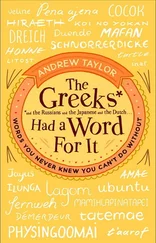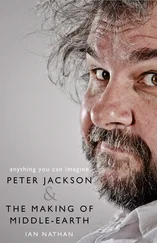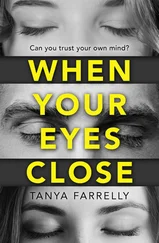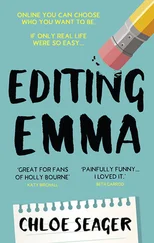While he had loved Disney, the grown-up Jewish street kid who once fished comic books out of dumpsters, set himself the task of tearing down the fairy-tale edifice of Snow White and the Seven Dwarves and the parade of pearly classics that followed. He had learned his trade on children’s cartoons like Deputy Dawg , Mighty Mouse and the 1967 Spider-Man TV series, but he hungered to take animation into adult realms. Offbeat, darkly funny and controversy courting films of the 1970s like Heavy Traffic , Coonskin and America’s first X-rated cartoon, the cult favourite Fritz the Cat . When it came to fantasy, he showed pedigree. The impressive Wizards is set in a post-apocalyptic future where the powers of magic and technology battle for supremacy — it’s elves versus tanks — which Bakshi insisted was an allegory for the creation of the state of Israel. It is a film Jackson much admires.
An avid science-fiction reader, the curly-haired, Slavic-featured Bakshi had cherished the idea of transforming The Lord of the Rings into an animated epic since the fifties. He was convinced he had an understanding of Tolkien that outweighed any other suitor. Learning that Boorman and UA were attempting to condense its three books into a single film, he declared it to be madness.
‘Or certainly a lack of character on Boorman’s part,’ he added sniffily. ‘Why would you tamper with anything Tolkien did?’
With Boorman’s version slain, he approached UA with his own offer to adapt what the studio was beginning to suspect was unadaptable. It should be an animated film made in three parts, he informed them. They had offered him Boorman’s script to read, but he wasn’t interested. Bakshi would begin again from scratch and, aside from a few necessary nips and tucks, remain faithful to Tolkien’s quest.
In a vivid picture of Hollywood dealing at its most wilfully entangled, with UA unconvinced by his overtures the headstrong Bakshi decided MGM would be a much better fit for both him and Tolkien. A fact that occurred to him in part because they were literally down the hallway. Since its heyday, UA’s West Coast operations had occupied a wing of MGM’s Irving Thalberg Building in Culver City. Dan Melnick, head of production at MGM, was a man he knew had actually read The Lord of the Rings . Melnick would surely have a grasp on the potential of his project. He was right. Melnick paid back UA’s $3 million outlay on Boorman’s script, and the deal was struck. MGM would make the film, UA distribute it.
UA were evidently relieved to wash their hands of Middle-earth making. Bakshi and MGM were welcome to the meadows of the Shire, Rivendell, Rohan, enchanted Lothlórien, sulphurous Mordor and all those other bafflingly named locations that poured incessantly out of that accursed book.
Except Hollywood is more than a match for Middle-earth when it comes to internecine warfare and figuratively hurling heads over the battlements. Within weeks, MGM had gone through a violent takeover, changing ownership, firing Melnick and delivering the news that ‘they weren’t going to make that fucking picture’ to Bakshi.
Here the tale takes a significant turn. The unflagging animator turned to another friend, onetime music mogul turned movie producer Saul Zaentz, whose relatively small investment into Fritz the Cat had paid off nicely. The titillating tale of a tomcatting tomcat had made $90 million around the world.
Fiercely independent, and like Bakshi of East Coast Jewish immigrant stock, Zaentz had come from a music industry background and held no truck with the rigmarole of studio politics. What he did have a taste for was the grandeur of the ‘important’ literary adaption. Through his company Fantasy Films (named for the jazz label Fantasy Records he joined in 1955 rather than anything heroic), Zaentz had invested some of his Fritz the Cat rewards into One Flew Over the Cuckoo’s Nest , which was nominated for nine Oscars (including one for Brad Dourif, Wormtongue to come, as Best Supporting Actor), winning five, including Best Picture. Something he would repeat with an adaption of Peter Shaffer’s Amadeus and, pertinently, The English Patient .
Stout and bearded, with a high domed forehead and glasses like window panes, Zaentz came with ironclad convictions, especially about art, and could spin from charm to confrontation mid-sentence. Once described as a ‘buccaneer’, he was a deft and deadly dealmaker.
In 1976, spying an opportunity, Zaentz readily agreed to back Bakshi’s film.
With their hands full with the ensuing calamity of Heaven’s Gate (currently grinding through its monumental production in Montana, overschedule, overbudget and by 1981 a flop of such epic proportions it effectively destroyed the studio — a warning to any who dared let the inmates run the asylum), UA relinquished the rights to Zaentz for $3 million. Through his newly fashioned Middle-earth Enterprises, Zaentz now retained the film, stage and game rights to The Lord of the Rings and The Hobbit as per Tolkien’s original agreement in perpetuity. The Tolkien Estate retained all literary rights.
In an absurd hangover from the project’s brief tenancy at MGM, which would have a huge bearing in the future, the rights to make a filmed version of The Hobbit remained with the studio. The rights to distribute such a film were now the preserve of Saul Zaentz.
Reconsidering his version as two films — Zaentz’s financial largesse went only so far — Bakshi still intended to embrace the volume of Tolkien’s book, capturing the scope and violence of Middle-earth. He felt children would want to be scared, and adults appreciate the sophistication of Tolkien as seen through his eyes.
As was his wont, Bakshi’s approach was far from traditional. For the heft of the world, the ranks of Orcs and men, he pursued a technique known as rotoscoping. In simple terms the animator traced over live footage for added realism. Live-action scenes of extras made up with animal horns, teeth and dressed in furs as Orcs and Nordic-looking riders were shot on the plains of La Mancha in Spain before animation began (Belmonte Castle stands in for Helm’s Deep). While static, the heavy, inky backgrounds have the gothic imprimatur of Gustave Doré woodcuts. Slashed with brushstrokes, the intensity of Bakshi’s apocalyptic imagery can be hard to shake.
In the portrayal of evil he revealed his grasp of Tolkien. The Nazgûl snuffle like bloodhounds, their limbs convulsing in their drug-like craving for the Ring. The interpretation of an alien-looking Gollum, voiced with an unforgettable toddler’s wail by the English actor Peter Woodthorpe was, until Andy Serkis coughed up his hairball performance, definitive.
But Bakshi would later wail that he had been under intense pressure over time and budget (estimated at $8 million). He was forced to cut corners, compromise his vision. The clichéd foreground figures are often no better than Hanna-Barbera cartoons: Frodo, Merry and Pippin are virtually identical; Sam looks like a melted gnome; and the Balrog is a laughable bat-lion hybrid. The script by Chris Conkling and fantasy author Peter S. Beagle (who had written an introduction to an American edition of the book) is faithful but abbreviated. Frodo sets forth with the Ring with barely a summary of what is before him, the film chalking off the major pieces at an unseemly gallop before it all grinds to a confusing halt after The Battle of Helm’s Deep, awaiting a sequel that would never come.
Perhaps Bakshi should have been forewarned of growing indifference when the studio removed any mention that this was Part One of two films, which only contributed to the general confusion. The $30 million his film made around the world was deemed insufficient reward by Zaentz and UA and the sequel was postponed forever. 2
Читать дальше












